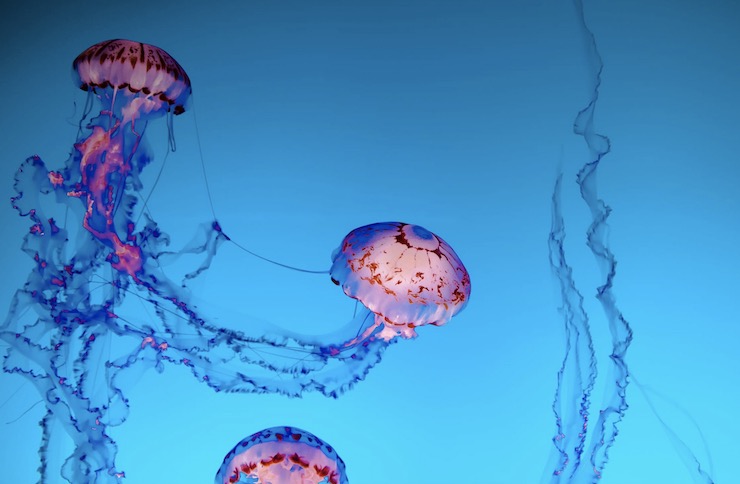
A day at the beach should be filled with fun and relaxation. Playing in the sand and surf, zoning out to the sounds of waves crashing on the shore, or the feeling of the cool refreshing water as it wraps around your body has been proven to be an excellent way to restore the mind and body. While most days at the beach are positive, there are always inherent dangers. Nothing can quite ruin a day at the beach like a sting from a nearly invisible jellyfish floating in the water. As Courtney Cox’s character Monica shouted out after getting stung by a jellyfish while enjoying a day at the beach, “Oh damn the jellyfish. Damn all the jellyfish!”
Fortunately, with the help of some hilarity, Monica was able to overcome her painful jellyfish sting. Most jellyfish stings cause discomfort for people, but that’s about all. However, there are several jellyfish that have such high levels of toxins in their venom that a sting from them can be fatal. One such species of jellyfish is the box jellyfish Chironex fleckeri, commonly known as the sea wasp. The largest of all box jellyfish, the sea wasp has a bell top that can be as large as a basketball with 4 clusters of 15 tentacles. The tentacles can reach up to 9ft long and are covered in stinging cells with enough venom to kill 60 adult males. Their natural habitat is the coastal waters of Australia to New Guinea and the Philippines to Vietnam. In a 1996 article from the Medical Journal of Australia, it states, “The chirodropid Chironex fleckeri is known to be the most lethal jellyfish in the world, and has caused at least 63 recorded deaths in tropical Australian waters off Queensland and the Northern Territory since 1884.”
Jellyfish warning signs are common on Australian beaches, still the sea wasp’s near invisibility makes them particularly dangerous for swimmers. Olivia Rowley, a Ph.D. candidate from James Cook University in Cairns, Australia has begun a first of its kind research program with drones to save beach goers from deadly sea wasp stings. With a focus on Biodiscovery at the university’s Center for Molecular Therapeutics, Olivia turned to drones after seeing the success that Australian lifeguards have had with them in spotting other dangers like sharks and crocodiles. The safety of Australian beaches falls to Surf Life Saving Australia, one of the largest lifeguard organizations worldwide. Their current methods for monitoring sea wasps means volunteers donning special full body stinger suits while swimming out into the water to drag nets to trap any jellyfish.
These methods can be unreliable as Olivia pointed out. Often, lifesavers don’t have access to the bodysuits and the netting process is time consuming and extremely strenuous. Olivia was determined to find a reliable and affordable means of keeping swimmers safe from sea wasp box jellyfish, one of the most venomous creatures on the planet. During the last “stinger season” Olivia and some colleagues headed out to Weipa, the largest town on the Cape York Peninsula, known for having high concentrations of jellyfish from October through May. While Surf Life already has a fleet of professional drones at its disposal, Olivia chose to use inexpensive off the shelf drones to test just how useful they could be.
The first step in Olivia’s experiment was to employ the standard method of spreading a 300 foot wide net just off the shoreline. Before dragging in the net, Olivia sent up the drone to document the region marked off by the net. Next, the net was pulled to shore so that the researchers could count how many jellyfish were trapped. Olivia compared the number of jellyfish she was able to count through the drone’s camera with those that were pulled up onto the shore. What Olivia found was that the drone was able to give her a reliable count as to how many jellyfish were present on the beach. This information could be used to alert Surf Life as to whether a beach needs to be netted or not. But because even an off the shelf drone worked, this could become a widespread safety measure throughout Australian beaches.
Surf Life Australia works tirelessly to keep the country’s beaches safe. Over the last few years, they have been pioneers in using drones to monitor beaches. However, they had never used the drones to monitor for jellyfish because of how transparent the creatures are. But Olivia’s research has shown that these technological tools can spot the nearly invisible sea wasps. “This project really highlights the capacity for drones as early warning systems,” Olivia said. “Using drones is fast, effective, and cheap and helps keep those on the front line out of the water and out of harm’s way.”
|